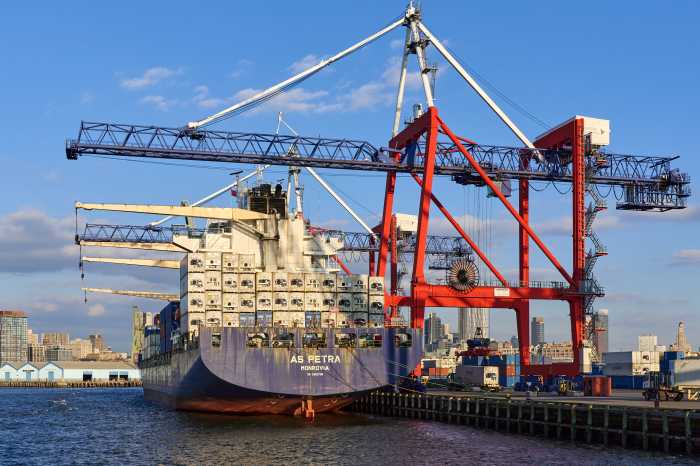BY Terese Loeb Kreuzer
Factory labor and factory life — the phrase invokes repetitive, monotonous work, unsafe conditions, assembly lines and company towns. But factories have evolved from the “dark Satanic mills,” as described by William Blake, of the 18th century’s Industrial Revolution. That evolution is the subject of the Skyscraper Museum’s current exhibit, “Vertical Urban Factory,” which opened on January 12 and will run through June.
The show is based around specific, iconic factory buildings in Europe and the United States, with nine examples of the Modernist style from the early 20th century and nine examples of contemporary factories. One section of the show is devoted solely to the factories of New York City.
“Many of these buildings emphasize the use of concrete, creating expansive spaces so that machines could go between the columns easily,” said Nina Rappaport, the curator of the exhibit. “There were large expanses of glass. In fact, they called the Ford Highland Park factory, [which dates from 1909], ‘the crystal palace’ because it had so much glass. The idea was to make the factories cleaner and safer, with more light and more air. That went hand in hand with the new technology – the cars and the machines that were being made inside.”
Rappaport, who is an architectural historian and critic, observed that many of the early Modernist factories were designed by engineers. But there were also architects, such as German-born Albert Kahn, who made his name and reputation in factory design. Kahn (1869-1942) emigrated to Detroit at the age of 11 and eventually became Henry Ford’s favored architect. Kahn was known for his innovative use of reinforced concrete to create the walls, roofs and supporting structures of his buildings.
“Many of the innovations — structural, material and spatially — were in factories because industrial buildings were places of innovation themselves,” Rappaport remarked.
Though Detroit was a center of industry because of the availability of raw materials, access and transit, New York City emerged as the country’s prime manufacturing center. According to a sign in the show, “There were 12,000 factories in New York at the turn of the 20th century, with a workforce of 500,000. Today there are approximately 6,500 manufacturing companies in New York City, employing 81,000 people.”
“Vertical Urban Factory” credits New York City’s 20th century preeminence to its port, railroad network and ever-expanding labor force. However, by the second half of the 20th century, manufacturing in the city had begun to decline. The question arose of what to do with the gargantuan buildings that had once housed this activity. “Many of the New York buildings have been in the news because of preservation issues,” said Rappaport.
The Domino sugar factory on the Brooklyn waterfront is an example. At one time the cartel that owned the factory, led by the Havemeyer family, controlled 98 percent of the country’s sugar production. The factory closed in 2004. In 2007, the oldest buildings were landmarked, with the remainder slated to be torn down and the property converted to residential use. There has been community opposition to this plan because of the scale of the proposed residential buildings.
Elsewhere in New York City, some factory buildings have been converted into galleries, residences and shops. In addition, small industries are moving back into some of the abandoned factories. Rappaport said the new businesses tend to be cleaner and greener than their predecessors. “The Greenpoint Manufacturing Center is a great example of conversion to light manufacturing,” she remarked. “Manufacturing may have moved out of central Manhattan but it’s still in the city.”
“Vertical Urban Factory” consists of models, historic photographs, films, architectural drawings, process diagrams and maps. Some of the photographs have never been seen before. There will be panel discussions and factory tours associated with the exhibit at dates to be determined.
For information about the Skyscraper Museum, call (212) 968-1961 or go to www.skyscraper.org.


































